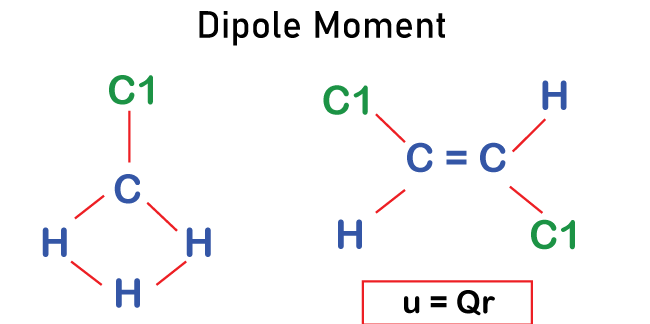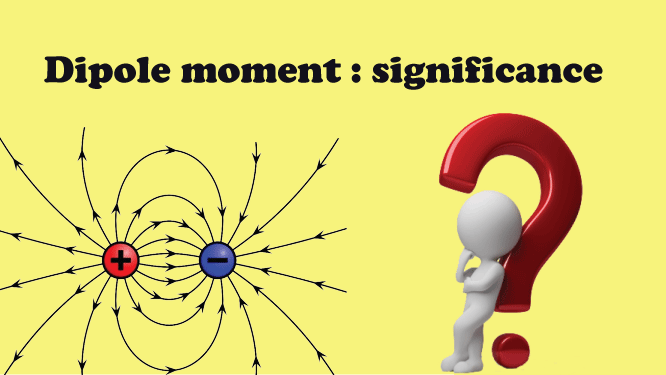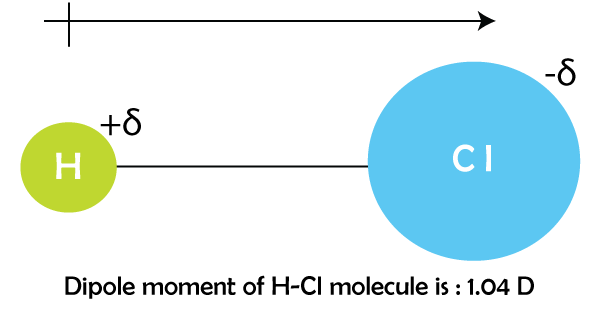Dipole Moment DefinitionWhen there is a charge partition, dipole moments occur. Dipole moments can occur between two particles in an ionic connection or between iotas in a covalent link; they result from electronegativity discrepancies. The more prominent the distinction in electronegativity, the more prominent the dipole moment. The distance between the charge divisions also influences the dipole moment's extent. The dipole moment corresponds to the molecule's limit. 
When particles in a particle share inconsistent electrons, they create a dipole moment. This happens when one molecule is more electronegative than another, causing that particle to pull more forcefully on the typical arrangements of electrons, or when one atom has a single arrangement of electrons, and the differentiation of electronegativity vector thinks as required. The water particle, which consists of one oxygen molecule and two hydrogen iotas, is one of the most well-known models. Differences in electronegativity and lone electrons result in a negative fractional charge for oxygen and a partly certain charge for each hydrogen. A dipole moment is a calculation based on the division of two inverse electrical charges. Dipole moments are communicated as a vector amount. The distance between the charges recreates the charge, and the heading is from negative charge to positive charge: μ = qr where, μ is the dipole moment, q is the isolated charge's extent, and r is the distance between the charges. Dipole moments are estimated in coulombmeters (C m), but since the charges are many times little, the confirmed unit is the Debye. One Debye measures around 3.33 x 10-30 cm. A particle's typical dipole moment is around 1 D. Example Dipole Moment ValuesBecause the dipole moment is affected by temperature, tables that provide the properties should include the temperature. Cyclohexane has a dipole moment of zero at 25°C. It is 1.5 for chloroform and 4.1 for dimethyl sulfoxide. Significance of Dipole MomentIn physics, dipole moments describe the transfer of electrons between two fortified molecules. The presence of a dipole moment recognizes polar and nonpolar associations. Polar particles have a net dipole moment. The bond and particle are considered nonpolar when the net dipole moment is zero or extremely small. Iotas with low electronegativity frequently frame compound bonds with a modest dipole moment. 
Important facts about Dipole Moment
Uses of Dipole Moment
Next TopicDiuretic Definition
|
 For Videos Join Our Youtube Channel: Join Now
For Videos Join Our Youtube Channel: Join Now
Feedback
- Send your Feedback to [email protected]
Help Others, Please Share










